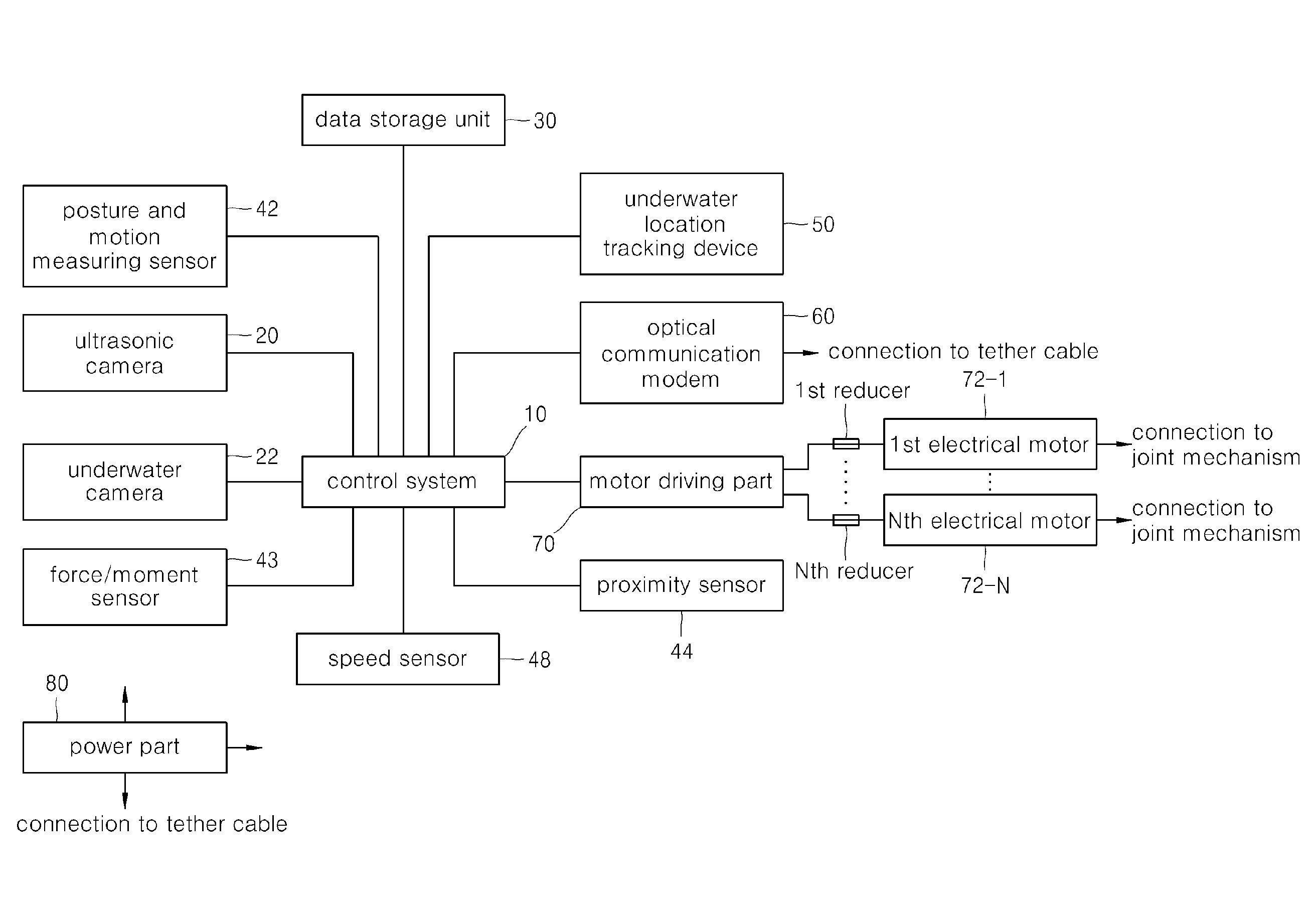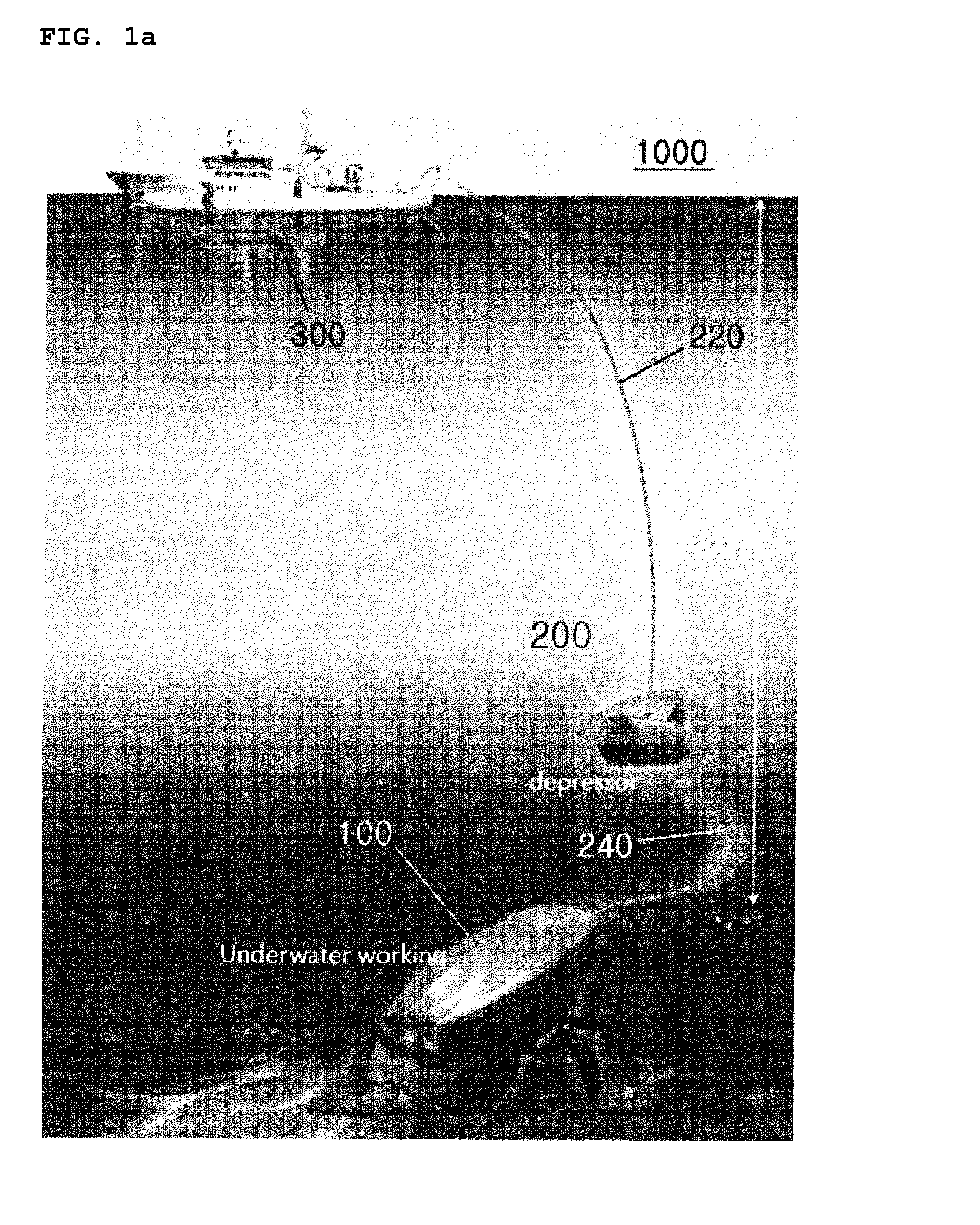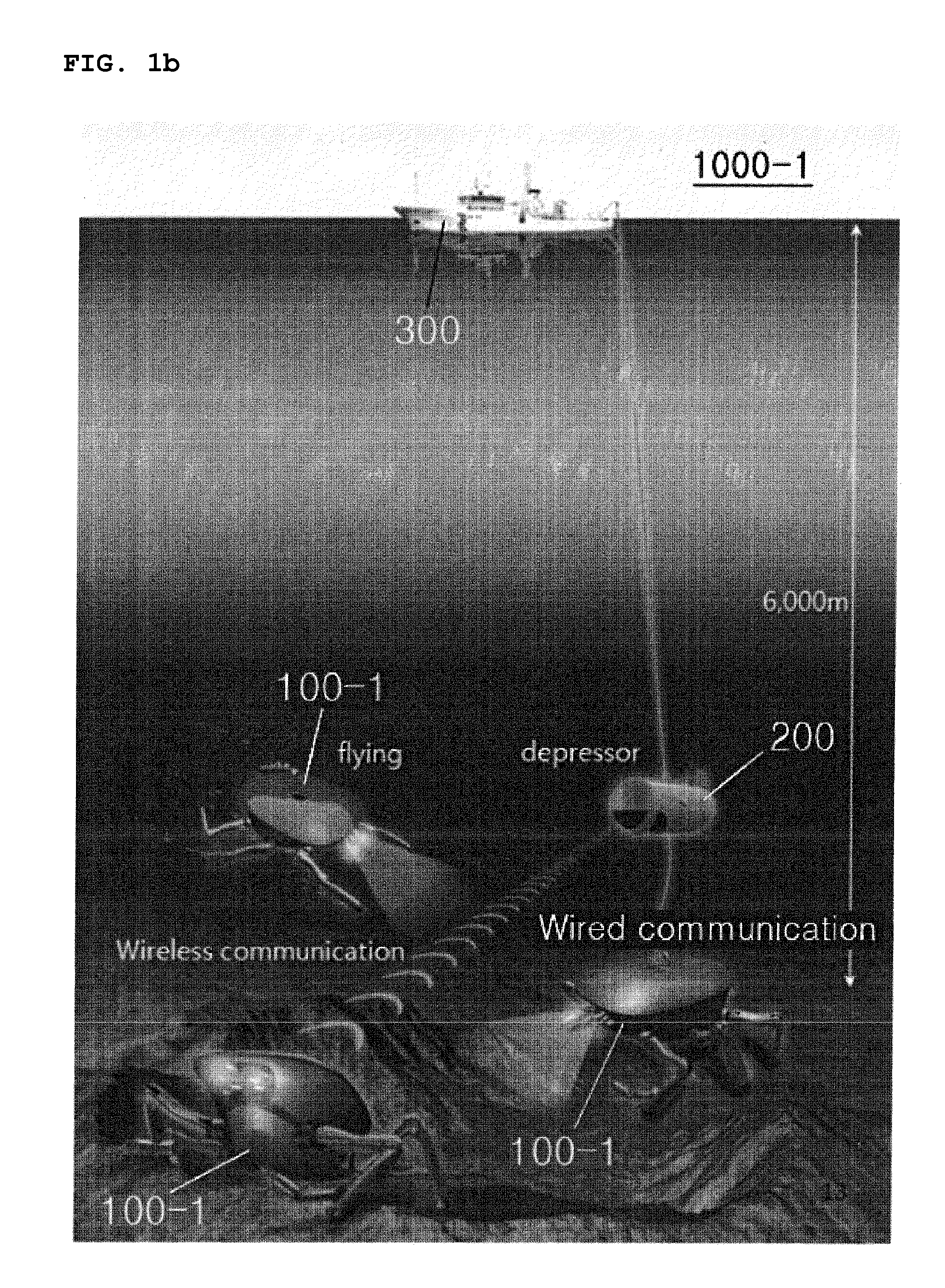Multi-joint underwater robot having complex movement functions of walking and swimming and underwater exploration system using same
- Summary
- Abstract
- Description
- Claims
- Application Information
AI Technical Summary
Benefits of technology
Problems solved by technology
Method used
Image
Examples
Embodiment Construction
]
[0045]The advantages, the features, and schemes of achieving the advantages and features of the present invention will be apparently comprehended by those skilled in the art based on the embodiments, which are detailed later in detail, together with accompanying drawings. The present invention is not limited to the following embodiments but includes various applications and modifications. The embodiments will make the disclosure of the present invention complete, and allow those skilled in the art to completely comprehend the scope of the present invention. The present invention is only defined within the scope of accompanying claims. In the following description, the same reference numerals will be assigned to the same elements.
[0046]Hereinafter, a multi-joint underwater robot having a complex movement function according to an exemplary embodiment of the present invention will be described in detail with reference to accompanying drawings.
[0047]FIGS. 1a and 1b are schematic views ...
PUM
 Login to View More
Login to View More Abstract
Description
Claims
Application Information
 Login to View More
Login to View More - R&D
- Intellectual Property
- Life Sciences
- Materials
- Tech Scout
- Unparalleled Data Quality
- Higher Quality Content
- 60% Fewer Hallucinations
Browse by: Latest US Patents, China's latest patents, Technical Efficacy Thesaurus, Application Domain, Technology Topic, Popular Technical Reports.
© 2025 PatSnap. All rights reserved.Legal|Privacy policy|Modern Slavery Act Transparency Statement|Sitemap|About US| Contact US: help@patsnap.com



